 Cuba can be quite a curious country. We can easily proclaim that it is one of the most unique and interesting countries of the 50+ we’ve visited during this two-year trip around the world.
Cuba can be quite a curious country. We can easily proclaim that it is one of the most unique and interesting countries of the 50+ we’ve visited during this two-year trip around the world.
Between our pre-trip research about Cuba and roaming around the island nation itself, we experienced lots of surprises, a little confusion, and loads of amazement. We discovered there was a bit of misinformation about certain aspects of Cuba and we, personally, had our own misconceptions about the country.
This post will dispel some of those misunderstandings and highlight some of our fascinations through a mixture of hard facts, first-hand accounts, and our two-cents. If you’re considering a trip to Cuba, this is what we thought were some of the most interesting facets of life to understand before your visit.
1. Cuba Is Still Technically NOT Open to American Tourism
You may have heard the news on December 17, 2014, President Obama announced an ease in restrictions traveling to Cuba. More recently on July 1, 2015, the US publicized diplomatic ties have been restored and by mid-August the US Embassy had reopened for the first time since the 1950’s.
Further fueling this, was the agreement between Cuba and the US was announced on December 17, 2015, revealing that commercial flights between the two countries would resume (2017 update: and they have). Many people understand all of this to mean that Americans can now be tourists in this once forbidden country. Not necessarily.
Despite all this the embargo is still firmly in place and Americans are technically not allowed to travel to Cuba for tourism.
You can now travel to Cuba under a general people-to-people license. But unfortunately, tourism is not part of that general license nor is it any of the approved 12 categories. So technically this makes it forbidden to travel to Cuba for the purposes of sipping mojitos on the beach. However, tracking your touristic pursuits in Cuba is not something the US government seems to be spending tax dollars on right now. So while tourism for Americans in Cuba is technically prohibited, it is very possible.
You can now travel to Cuba under a general people-to-people license. But unfortunately, tourism is not part of that general license nor is it any of the approved 12 categories. So technically this makes it forbidden to travel to Cuba for the purposes of sipping mojitos on the beach. However, tracking your touristic pursuits in Cuba is not something the US government seems to be spending tax dollars on right now. So while tourism for Americans in Cuba is technically prohibited, it is very possible.
How Americans can now travel to Cuba is discussed in more detail during our follow-up post: Cuba Travel Tips You Need To Know.
2. Cuba is Building for Something Big
Arriving in Cuba, we were surprised to see so much construction throughout the country right now. In Havana nearly every major museum and hotel was under renovation. Many streets, thoroughfares and town squares were being revitalized. Fresh coats of paint were being slapped onto city walls where paint had once been peeling. The capital building was full of scaffolding.
Cuba is clearly getting ready for something and they want their country to look good. Perhaps they are getting ready for an influx of Americans when those aforementioned commercial flights finally begin running. Or maybe they’re even getting ready for the embargo to be lifted, in which even more Americans would likely flock back over to this tropical paradise. We’ll see if this prophecy comes to fruition, but with all of the construction going on in Cuba, it sure seemed that way to us. (2017 update: we were partially right! While the embargo is still in place, Americans now flowing to Cuba given the ease in restrictions.)
3. Cuba Also Has Not-So-Classic Cars
Every photo of vehicles in Cuba that we’ve ever seen shows those beautifully restored classic American cars in all their glory against a beautifully crumbling building. Like many people, we’ve always been under the impression that Cuba is completely stuck in a time warp with absolutely no modern cars on its roadways.
With all of the fantastic photo opportunities to take pictures of shiny American classics, it’s easy to believe those are the only vehicles gracing Cuba. Spoiler alert: modern cars do exist in Cuba.
The reality is that those classic Fords and Chevy’s aren’t the only cars rolling through Cuba. I’d estimate that over half the cars in Havana are not classic American cars, which was a bit of a surprise to us. There was actually a very large mix of makes in models spanning across decades and from many different countries. These cars are driven by a mix of tourists (rental cars), government officials, tourism workers, and other fortunate Cuban residents.
The truth of the situation is that a 2009 Kia Optima just doesn’t make for a great photo op.
4. Dude, Where’s the Cars?
Speaking of cars, it was the lack of vehicles throughout Cuba that was a pleasant surprise. The absence of cars is a pretty stark contrast to what you’re likely accustomed to back home.
According to a 2008 WorldBank.org report, only 3.8% of the population have a car in Cuba (compared to about 81% in the US). For perspective, the chart below compares Cuba to a selection of nearby countries and visiting countries.
This absence of vehicles leads to many empty streets to amble down. Often locals and tourists alike walk right in the middle of most streets, although they were actually open to traffic. Many alleyways seem more like a pedestrian thoroughfare but people strolling through them soon realize that the alleyway is actually a road once they notice a car barreling through from behind them.
This lack of vehicles is refreshing throughout Cuba. And the clopping of horse hooves sounds a lot more pleasant than a loud exhaust pipe.
Of course, cars are thicker in Havana compared to other places in Cuba. But even in Havana, it was the least amount of traffic we’ve ever experienced in a capital city.
5. Discovering Casas Particulares
We almost always plan our accommodation in advance but when we got busy with things prior to our Cuba trip this was something we neglected until the day before our departure. We looked at the outrageous hotel prices in Havana ($300-$500 per night – yikes!) and quickly discovered that it would be in our best interest to instead stay at a “casa particular.” What a great decision!
So what exactly is a “casa particular?” Cuban residents can rent out an extra room in their home. They pay a monthly government tax and allow for regular government inspections to ensure the accommodation is up to par. We highly recommend staying at these “casas” not only because it’s economical but also to meet locals, put money directly in their hands, and simply to have a much fuller experience in Cuba.
For our upcoming stay in Havana, we simply called a woman whose number we found online. Using Skype and in my broken Spanish, we made a reservation by providing my first name along with some good faith. Upon arriving near the apartment in Havana, I heard “John” being hollered from a 3-floor balcony welcoming us and letting us know she’d be downstairs to let us in.
This casa particular (and all of them) was a perfect way to experience Cuban life. The hosts take care of you and look after you with a level of warmness that is atypical from anywhere else we’ve stayed in the world.
The rooms themselves can be pretty sparse and some casas were definitely better than others, yet they were always clean & tidy. But it’s the people and the experience staying there (not the amenities) that really sets them apart. Although all of the casas we stayed at did have hot water showers, air-conditioner, a private bathroom, and even personal refrigerators with minibar were standard! What else could you ask for? At only $25 per night, we found casa particulares to be of incredible value! It was fairly standard to have a huge breakfast for an additional $5 per person.
In our upcoming Cuba Tips post, we’ll be dishing out all our advice on where to find casa particulares and the best ways to book them.
6. What About the People in Cuba?
We really weren’t sure what to expect from the Cuban people. We had heard that Cubans are a friendly bunch. Yet just before we left we stumbled across a blog post or two that was contrary to this sentiment. We also read about pesky jinteneros (hustlers who prey on tourists), which we have an ongoing annoyance having dealt with way too many touts all over the world. Then there’s that awkwardness of the fact that we come from the “evil” USA, so we weren’t sure exactly how we’d be received by Cubans.
So how were the Cuban people? Everyone has a different experience, but here’s our opinion: Cubans are some of the warmest people we’ve encountered during our travels. We reflect back so fondly on the countless kisses, the laughter, and smiles we received during our two weeks in their country. Staying in some of their homes really made it a more personal affair too. We often felt like we were simply crashing at a friend’s house rather than customers of their casa particular.
Sure, there are still some bad apples in Cuba, just as there are everywhere in the world. But those apples seemed to be very few and far between. You always need to be careful of scammers.
We found the jinteneros to be at a minimum and most were unusually polite! When approached with a menu or taxi offer, they could usually be shaken off with a single “no gracias” instead of the persistent three or four stern “No’s!” we often have to use elsewhere. Upon declining their offer in Cuba, we were often told, “Ok, happy holiday!” with a smile. How great is that!
Ok, happy holiday!”
7. Awkward! US-Cuban Relations
We were a little uncertain about how Cubans feel about Americans. You know, there’s that whole embargo thing, all the turmoil from the 60’s, Elián, Guantanamo, and decades worth of bad blood.
But Cubans welcomed us with open arms. Some locals actually seemed super excited to find out we were American. With the many travel restrictions that have been in place for Americans, there are not many of us traveling there, particularly so outside of Havana. So we’re somewhat of a rare breed.
While some Cuban folks understandably may not think too fondly about the US policy, many do seem to be smitten by US culture. From MLB baseball to those classic American cars and even Apple iPhones, American culture seemed to be a foreign fascination to many Cubans.
But we found that the US wasn’t entirely foreign to them. Most Cubans we spoke to actually have some relatives living in the US. With us being from South Florida this often gave us common ground to speak about since many Cubans could even cite street names and neighborhoods around Miami where their family members are living.
We did witness some anti-American propaganda in museums and even with some of the rhetoric of tour guides from day excursions. Yet overall it was nice to realize that most Cubans recognize the beef between our two countries is with our respective governments and is not on a people-to-people basis.
8. Who Let the Dogs Out?
One peculiarity we found in Cuba was the dogs. We’ve encountered dogs, both as pets and street dogs, all over the world but never such funny canines as in Cuba.
First of all, the street dogs are just as friendly as the people are in Cuba. So it was puzzling to see many Cubans often annoyed by our four-legged-friends. Instead of people greeting dog with a gentle pet, it was fairly common to see dogs greeted with a stomp in an attempt to scare them away.
Another oddity was the number of Siberian Huskies as pets throughout this extremely hot country. Thankfully they are given haircuts but it still seems like a strange breed of choice for the country. We later learned that Huskies are a strange new symbol of status for the more well-off in Cuba.
But perhaps the most peculiar thing we noticed about dogs in Cuba was the dogs’ propensity to hang out on rooftops. Particularly in the more southern towns we visited, it was very commonplace to see dogs running around on roofs, sometimes on the roofs of 3-4 story buildings. It will remain a complete mystery to us of how they got on there and why it’s their hangout of choice.
9. Resourcefulness and Cuban Ingenuity
When supplies are limited, you have got to be resourceful. We stayed at a casa where scrap metal had built a BBQ grill. Elsewhere, an old fan cage and some clothes hangers had built an awesome chandelier! Practical and inventive means were used whenever possible. Nothing ever seemed to be wasted. Sure, it may be out of necessity but you really have to applaud these creative efforts.
Even when buying bus tickets, we noticed the attendant using the backside of used tickets to print out our receipt. We loved this notion of reusing and recycling.
10. Cuban Cuisine May Surprise & Delight
Coming into Cuba we knew very little about the food. Living in Florida, we’ve had our fair share of Cuban sandwiches but that is the extent of our culinary journey into the country’s cuisine. Prior to our visit, most of what we had read about Cuban food reflected bland tastes and uninspired dishes.
With expectations low, our taste buds were delighted to find delicious meals throughout the country. The country’s national dish of ropa vieja (spicy shredded beef) does not disappoint.
Yet we were surprised to find it was Cuban seafood that stole the show. I’d never really considered seafood to be a big part of Cuban cuisine, but this is an island nation after all!
You haven’t been to Cuba unless you’ve had a succulent grilled lobster (or ten). Other must-try seafood include the camarónes (shrimp) and the robalo (snook), a delicious white fish unavailable on US menus. It’s all decently priced too, with complete lobster dinners averaging around $10! Yes, please!
Bring your appetite! The portion sizes tend to be absolutely humongous. We regularly found it difficult to finish our meals. For example, that twin lobster tail meal pictured above is for one person. That was preceded by bread, soup, and salad and came with a post-meal dessert. Stuffed!
As for the Cuban sandwiches, they are actually fairly few and far between within Cuba. And to be frank, the Florida rendition of this classic sandwich is better than those we ate in Cuba. We’d recommend sticking to the delicious and abundant seafood instead!
11. The Interesting Twists on Cuba’s National Drinks
It’s no surprise that Cuba is a rum country, with Havana Club rum leading the pack. We arrived ready for our fill of mojitos, cuba libres, piña coladas, and daiquiris. So we were delighted to find that they were just as ubiquitous and tasty as we had imagined.
But some of these drinks were a little bit different than what we were accustomed to back Stateside. In fact, they were better! Here’s what was different.
Mojitos started off exactly as you know them: muddled mint, lime juice, sugar, white rum, ice, topped with soda water. Here’s the twist: top it off with 3-4 dashes of bitters. Try it. Several bartenders we spoke to in Havana insisted it was the traditional way to make a mojito. Whether traditional or not, we can attest it was the tastiest version of the classic cocktail we’ve ever had.
Piña coladas also started off fairly standard. Pineapple juice, coconut cream, rum, and ice are all blended into the cool and frothy drink you know and love. The fresh pineapple juice used in a Cuban piña colada certainly contributes to its easy drinkability. But there were additional twists here to enhance the drink even further. Cinnamon is sprinkled liberally atop the frozen cocktail that unintuitively enriches the drink. And in many establishments, piña coladas are delivered to your table with a bottle of rum for you to self-pour as much or as little as you want into the drink. Bottoms up!
12. Cuba’s Thriving Tourism
We didn’t expect to see so much tourism in Cuba as we did. Our preconceived notions were that Cuba was uncharted territory on the road less traveled. Instead, we found a flourishing tourism scene throughout the country.
Not to worry though. Cuba still has lots of gritty charm and it’ll be a long time coming before Havana becomes Disneyesque. There are plenty of paradises to be found and off-the-beaten destinations to explore with the country.
Yet we were surprised at the level of tourism infrastructure that was in place and also the many tourists flocking here. In Havana you could find double-decker hop-on-hop-off busses and world-class hotels. The coastline around Varadero has a plethora of all-inclusive resorts that seems to rival Cancun. And while the highways were mostly empty, tour buses were an increasingly common sight.
Although the US prohibits Americans to vacation here, that certainly hasn’t stopped the rest of the world. In fact, Cuba receives over 2.5 million visitors annually and tourism is now one of the country’s biggest economic drivers. According to these stats released by the Cuban government, Canadians apparently come to Cuba in droves.
Yet we would have guessed it would be Germany or Netherlands that topped the list, as it was travelers from those two countries that seemed most common during our two-week circuit around the island in December 2015. So perhaps those numbers are all on the rise, as there seems to now be a rush to get to Cuba. A common sentiment from them and nearly all travelers to Cuba was “to get to Cuba before the Americans come and everything changes.” Oddly enough, that was part of our ammo too!
Get to Cuba before the Americans come and everything changes.”
13. Eco-Tourism in Cuba? It’s a Thing!
We had always considered Cuba as a cultural destination. It is a place to see its history and unique way of life. Cuba is certainly not the type of place for outdoor pursuits and nature. We were quite happy to realize these perceptions were dead wrong.
While Cuban culture is undoubtedly a star attraction, there are also some great eco-tourism attractions. You can choose your own adventure when viewing the infamous “magotes” (limestone outcroppings) surrounding Viñales: hike, bike, or horseback. Be sure to do a little spelunking in the caves while you’re there too!
The beaches offer an entirely different array of recreation with scuba diving and snorkeling. Or visit the nearby swamps to view crocodiles, flamingos, and other unique wildlife. These creatures abound in the Zapata Swamp, which is one of six Unesco Biosphere Reserves in Cuba.
Definitely don’t miss the mountains, either. Cuba is actually a fairly mountainous country. The highest peak, Pico Turquino, is nearly 2 kilometers in height! Yet we enjoyed roaming around the well-marked trails throughout the Topes de Collantes range. Here you’ll find many natural swimming holes alongside impressive waterfalls.
14. Swallow that Trailing “S”
It took a while to pick up on but we realized that Cubans tend to not pronounce the “s” when it’s at the end of a word. So “gracias” is “gracia.” “Dos” becomes “do.”
You’ll catch on after a while. The only trouble is that once you get accustomed to this linguistic quirk, you may find it becomes difficult to switch back to normal!
15. Get in Line or Get Out of Cuba
Granted we were in Cuba during high season, but we were regularly astonished at the length of queues, even for seemingly simple things. We once waited for twenty minutes to buy a bottle of water at a convenience store.
Another time we waited nearly an hour to buy a bus ticket. The attendant then told us to come back in 45-minutes, so we simply got right back in line. Nearly two hours later, we finally had our tickets.
There seemed to be an extreme lack of urgency with both customers and cashiers alike. I suppose that what they call “island time.”
Pack your patience!
16. Paperwork is a Lot of Work
There seemed to be an overabundance of paperwork for everything in Cuba. Part of this is because computers aren’t widely used but also it just seems to be a way of life to record all sorts of seemingly useless information.
Upon checking into a casa particular, your host will take about 15 minutes to fill out a huge form to record all of your information, appeasing government policy. When booking a day tour, every line item is filled out for their records too. Then during the tour, there will always be a pit stop at a station somewhere along the way for a guide to complete additional paperwork.
One Cuban joked with us and said,
If you want to bring Cuba down, you don’t need to embargo, just stop our paper supply.”
17. Internet in Cuba?
Is there Internet in Cuba? Could you find wifi in Cuba? We wondered if it would be possible and had read conflicting accounts online.
We can report that there is indeed wifi throughout big public parks/squares and nearly all big hotels. Just buy a wifi card for $2 for an hour and surf away. The speed was surprisingly tolerable and even sometimes allowed streaming with speeds clocking in near 5 mbps.
In some more remote places, the wifi was completely non-existent. Yet it was actually quite nice to disconnect in Cuba. It was very evident that people on buses, bus stations, in bars, and restaurants were all more talkative to one another. No one was zombified and unapproachable staring blankly into their screens.
Yet sometimes work commitments, onward travel planning, and other responsibilities may dictate the necessity to connect. So it is nice to know that wifi is at least available on a limited basis.
18. Funny Money
We had read about Cuba’s dual currency prior to our arrival but the concept was still quite a novelty. You must understand that there are two currencies in Cuba: CUC and CUP. Know the difference.
Cubans mainly use the National Peso (CUP), which is the currency of choice at local markets, street food stands, and other locally-oriented services. There’s not much you’ll need to buy in CUPs. But, if so, many places will accept the other currency, CUCs, and will gladly convert them for you. When this happens the conversion is often to their favor, of course. But we’re usually talking about nickels and dimes, so no need to fret that you’re getting ripped off.
Then there is the Cuban Convertible Peso (CUC), which is used for most things considered “luxury” in Cuba such as restaurant meals, accommodation, booze, groceries in a store, or any sort of consumer product good that may have made its way to the isolated nation. CUCs are the currency you will primarily use when traveling to Cuba.
One added oddity we found about the CUC was the common presence of a 3-peso bill. In all of the countries we’ve traveled to I can’t recall any country that had a note with a multiple of three. You wouldn’t think it makes that big of a difference but it can really test your math skills when paying or receiving change after a few strong mojitos!
19. Shockingly Safe!
During our travels around the world, we’ve noticed a fairly consistent correlation between a population’s wages and our perception of safety. We weren’t sure what to expect in Cuba though.
The entire time we were there, we felt extremely safe. Actually, it felt among the safest countries we’ve visited. In some locations around the world, we feel a bit uneasy about walking around with our $800 camera dangling from our neck. It can also be unnerving to leave our electronics unlocked in our room. Yet in Cuba we felt completely comfortable being photographers, walking around the streets at night while our MacBook remained left out in plain sight back at our casa.
When we had rented bikes in Viñales, we didn’t receive a bike lock. When asked about it, the rental man simply explained that no one would steal our bikes here. After looking around town, we realized that no one locked up their bikes. Wow!
After examining the most recently published homicide data (2011) from the United Nations Office of Drugs and Crime, we discovered that Cuba actually has one of the lowest homicide rates of any country in the Americas. I suppose being a police state does have some benefits.
With tourism now being a leading industry for Cuba, it is really in the government’s best interests to ensure that visitors are safe. It definitely felt so to us.
20. Balcony Life
In Old Havana the streets are lined with relatively tall buildings sporting ornate balconies. They are lovely but it’s not only their fine looks that make them interesting. Balconies in Havana seemed to have a unique culture onto themselves.
Neighbors have conversations by shouting across the streets. Similarly, doorbells have been replaced by a good old fashion holler. Occasionally while walking in the roadways below, we saw people seemingly talking to themselves only to realize they were actually carrying on a conversation with someone on the fourth floor.
Many balconies are even higher. With no elevators in place, even the simplest of errands become a tedious chore, particularly for the elderly. But when the fruit guy or the newspaper man comes by, there is an alternative solution. Baskets are carefully lowered down to deliver money and to pick up the coveted goods. No need to go downstairs. Life continues from Havana’s wonderful balconies.
21. Intricacies of a Socialistic Economy
Being the only socialistic state we’ve visited, we knew that we were in for something different. Yet it was actually experiencing this way of life that was truly an eye-opener.
What was first clearly evident was the lack of stores and advertising. Having arrived in Cuba from the US in December, it was a stark contrast to the rabid commercialism consuming the States during this pre-holiday time period. Billboards and even sign advertisements were completely absent in Cuba aside from occasional Havana Club or Bucanero (beer) branding on restaurant facades. Well, there were occasional billboards promoting the country’s heroes such as Che.
When conversing with Cubans, they would sometimes ask about my occupation back home. The first time I tried to explain in my bad broken Spanish what “marketing” was, I slowly realized that there isn’t much need for any such careers in Cuba. Marketing seemed to be a foreign concept.
Meanwhile it was a novel concept for us to see the gratis food deliveries each day. In the mornings the bread guy would come by delivering loaves of bread to each household, compliments of the Cuban government.
Stores to buy simple supplies such as bottled water or snacks were very few & far between. Often the shelves were less than half stocked. Yet there would always be a line at the checkout.
It was also evident and interesting to witness Cuba’s more recent shift towards a mixed economy. Private restaurants (paladares) are now permitted under Raul’s reign, helping to fuel a food revolution in Cuba. Owners of “casa particulares” are now allowed to host multiple rooms instead of the former limit of two. Such businesses are still highly regulated by the government and taxed accordingly. Yet some of the Cubans embarking on these freeer enterprises are widening a wealth gap that previously didn’t really exist much.
Despite these recent changes, don’t think that a second economy is flourishing here. It is not. We learned this firsthand when conversing with one of the casa particular owners we stayed with. We were surprised to learn that his day job was actually a medical doctor by trade. He rents out his extra room to supplement his income. We later learned that doctors make about $40 per month. That comes out to about $0.25 per hour! (This is not a typo.)
We learned that his wife is also a doctor, currently doing operations in Angola in an effort to try to bank money. Her goal is to earn enough cash and then return to Cuba so that her doctor husband can maybe purchase a car and begin running a taxi business on the side because that tends to be much more lucrative than being a doctor. This is truly mind-boggling! Yet that is how the economy works in Cuba.
Cuban Curiosities
So there you have it. Those were the top items of interest for us during our recent trip to Cuba.
Have you been to Cuba before? What did you find to be interesting or surprised you?
If Cuba is on your upcoming travel list, what questions do you have about travel in Cuba? Also be sure to check-out our follow-up post where we spill loads of practical advice to help you plan your own trip to Cuba. See: Cuba Travel Tips.
Also, use the image below to pin this post to Pinterest to save for later.
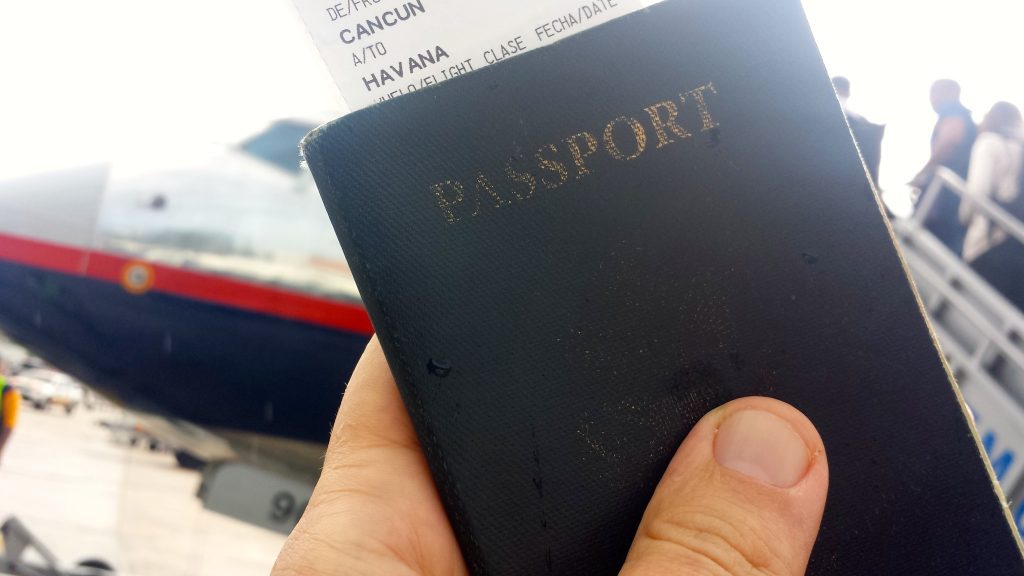



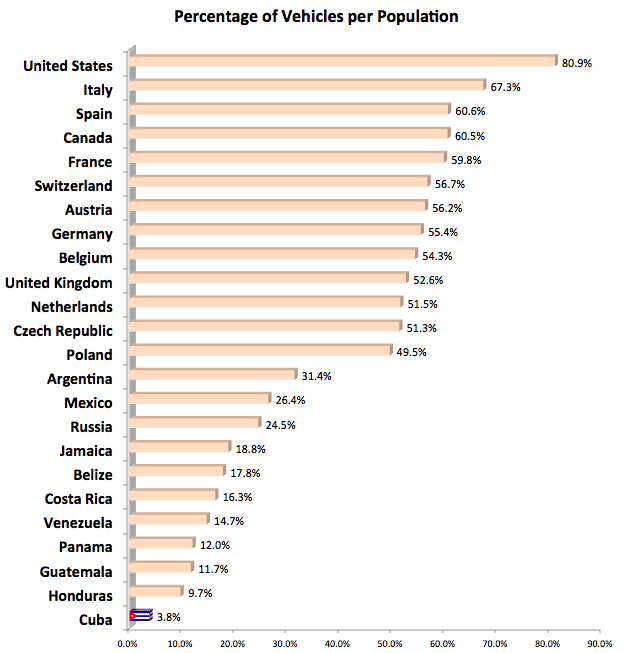

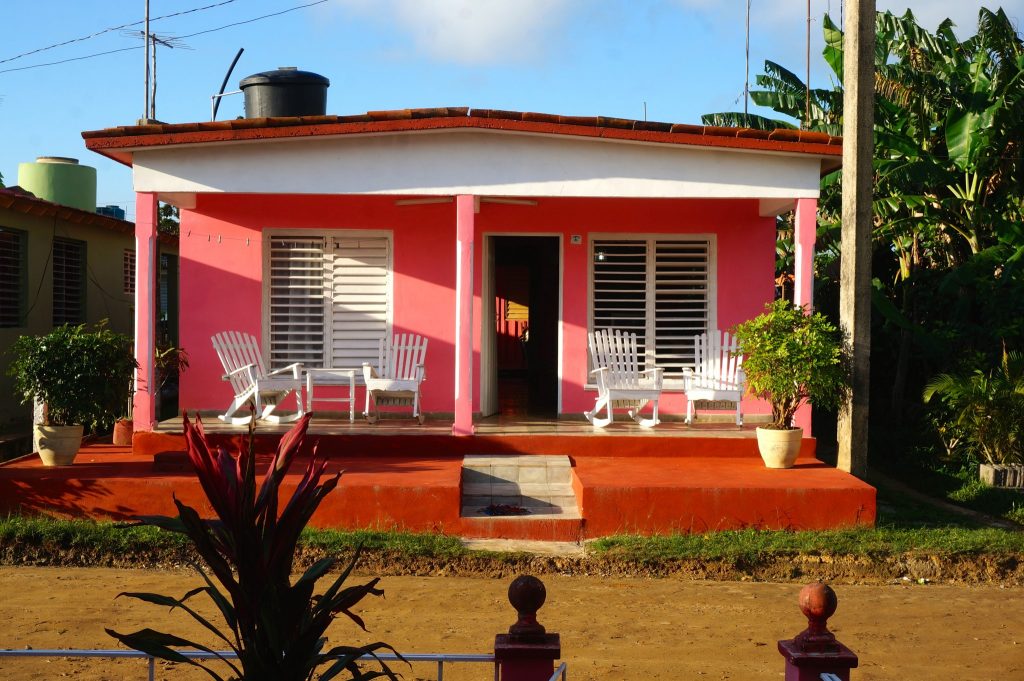







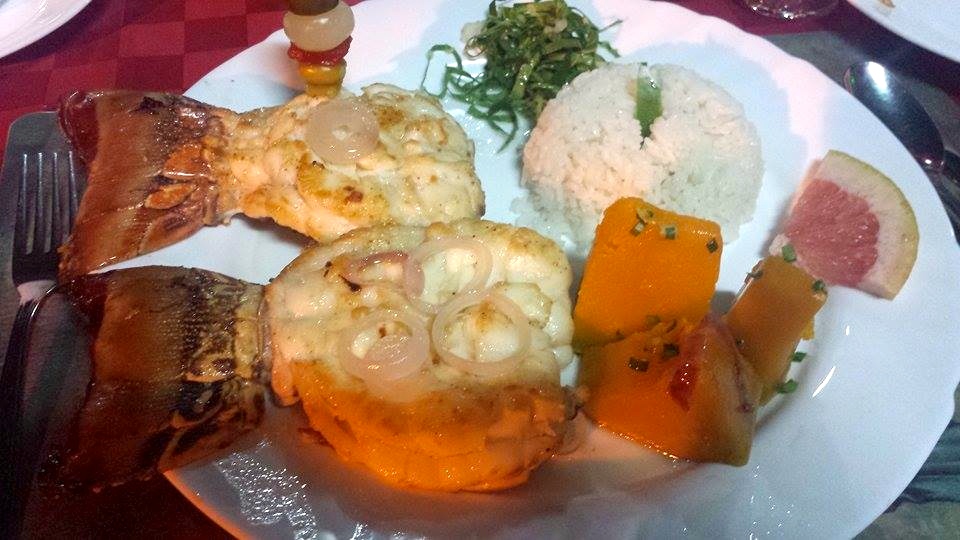

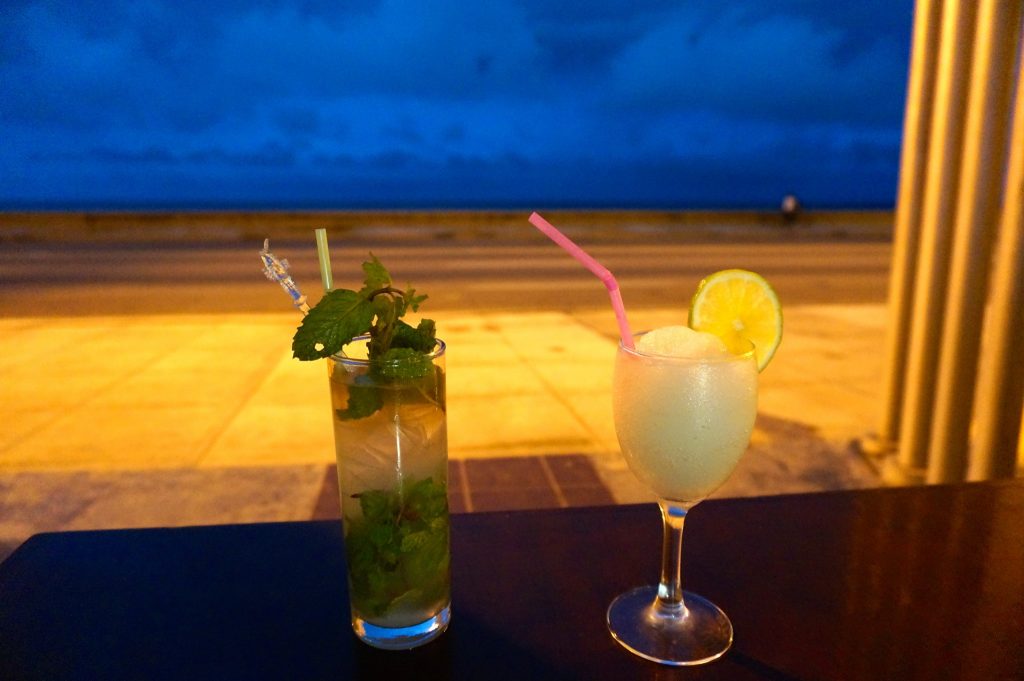



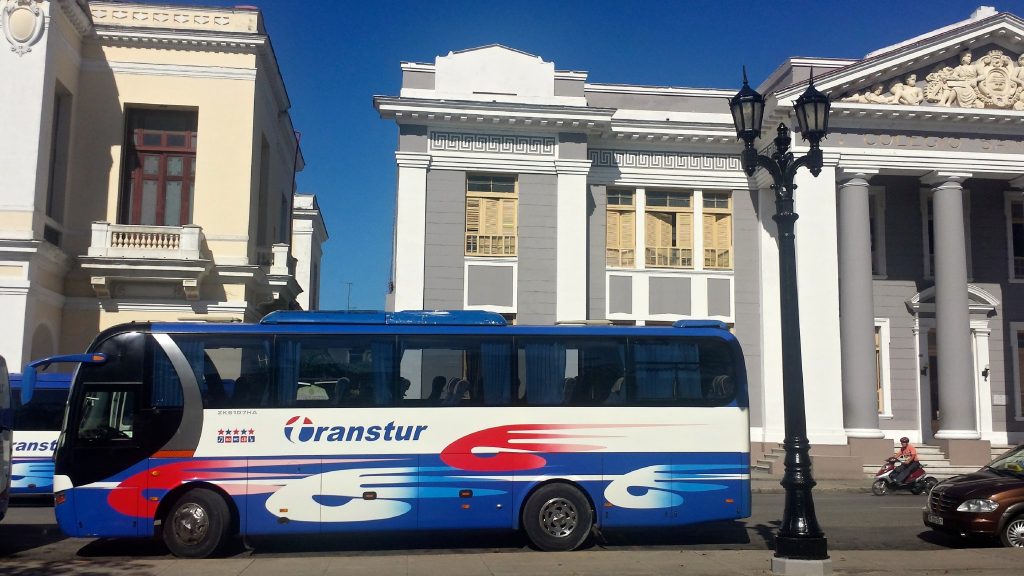
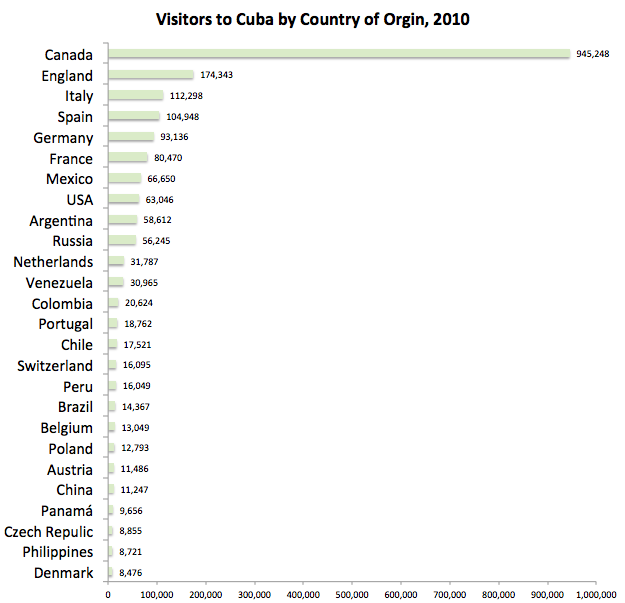

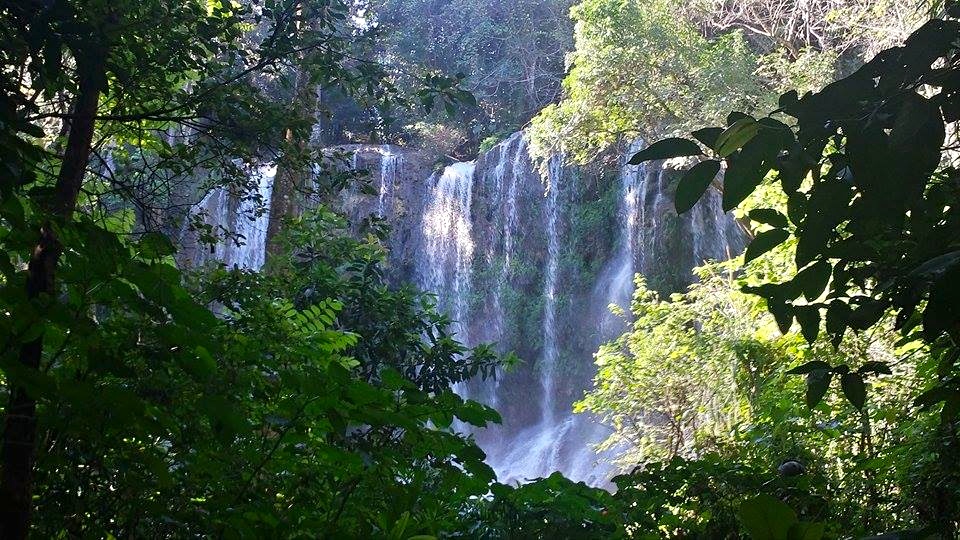

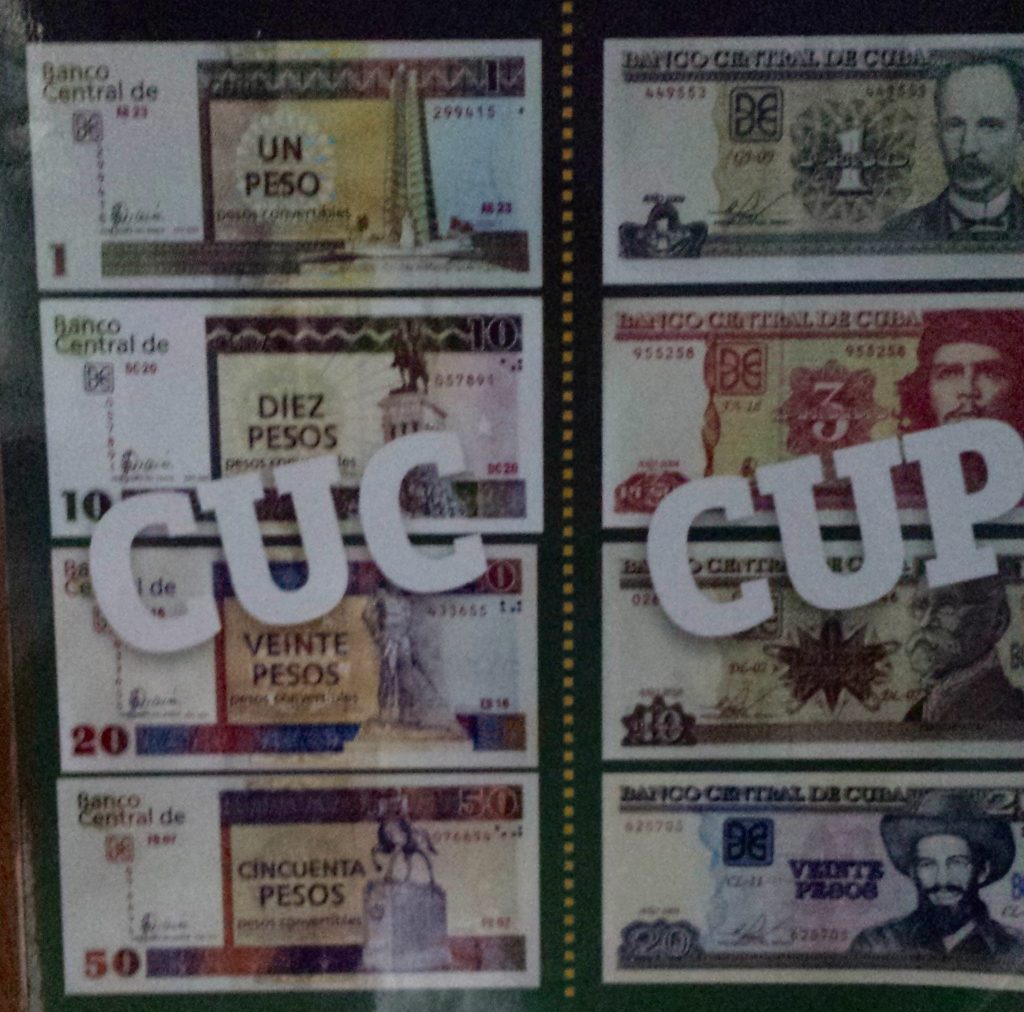





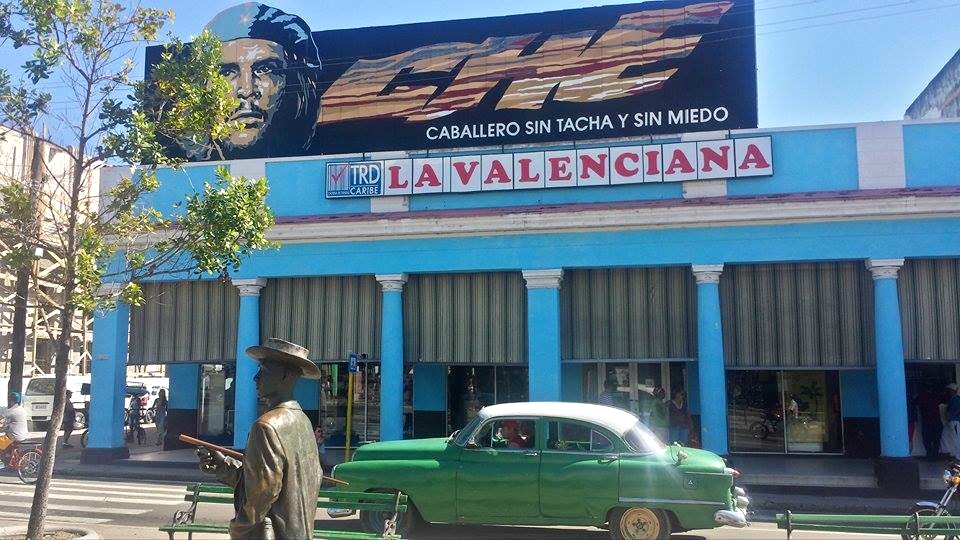



This is the best guide I’ve found in “bloggerland” for Cuba. I’m hoping to go there in March and I’ll take a printout of this blog post with me. Thank you for taking the time to compile such a complete and informative post.
Wonderful post. Actually all your posts are great (I followed your Merida recommendations and it was amazing).
I have a question about the “reasons” to visit Cuba, can we use something like amateur journalist (or photographer), it is not a lie (as i have published photographs in magazines before), but i am not a full time journalist by any definition.
Hi Sandip and sorry for the delayed reply as we’ve had a lack of reliable Internet while traveling over the past month. Anyhow, Cuba policies are always changing and with Trump’s June 16 Cuba announcement they’re changing yet again, in which we need to update this post. This article provides a good overview on how the change in policy affects travel: http://www.miamiherald.com/news/nation-world/world/americas/cuba/article158491989.html
The people-to-people way has been best/easiest “reason” to provide with the previous loosening of restrictions, but when the new regulations go into place, it looks like that will go away. You could try the journalist as a reason, but it could be rejected. Another route could be to join a tour since even under Trump’s new restrictions, it is still totally fine to visit Cuba as part of a tour. It’s only independent travel that’s unfortunately being hit under the new travel restrictions. Alternatively, you can always go through the back door (Mexico). Hope that helps!
That’s some great information about Cuba. Hopefully, people will learn a lot about Cuba prior to visiting the island. It’s wonderful that Cuba is a very pedestrian-friendly country.
Yes, we loved how pedestrian friendly the island was. And the lack of cars and noise polution that went along with it was equally pleasant. Thanks for stopping by Mary!
Being Canadian I have been travelling to Cuba for years – approximately 30 visits. I love it and I do hope that the culture remains strong when the doors open! I have watched the island grow and change since the 1980s. I still count it as my favorite place for R&R, the music, dance, food, people, beaches, etc. As a single solo traveller, I have been safe and happy there all of my life. It truly is my second home.
PS – I am female and I have visited 23 countries around the world. I love to travel.
That is awesome! It’s so great to connect with other people who have this passion! And next time we head over to Cuba, we might need to get a few tips from you! 🙂
Wow, that’s a lot of trips to Cuba! And we can completely understand why you’d want to return to this fascinating country! 🙂
I can only imagine how the island has changed over the course of the past several decades. What a nice place to have as a “second home!” We also hope that the culture is preserved once the doors open.
A very good article. You have captured Cuba very well. A lot of bloggers sometimes get their facts wrong but I cannot dispute any of your findings.
We have been travelling to Cuba from Canada since 1991. It is a country of many contradictions and changes from province to province. The best part of Cuba is the people and their resilience. We have seen changes from year to year beginning our travels during the Special Period.
We made 4 trips in 2015 and have our Casas booked for next month. I look forward to more of your articles.
Thanks so much for this feedback. It’s very reaffirming to hear from someone who has been many times over the past three decades. I cannot even fathom how you have seen things change and evolve between your visits. Completely agree with your sentiments about the Cuban people and their resilience. We hope you have an awesome trip back to Cuba next month and many more ahead!
Thank you for this post! I’m headed to Cuba in 2 days, and wanted to get your take on whether I should buy locks for our suitcases. We plan on staying at Airbnbs…
Thank you!
Hi Sally! While it’s always better to be safe than sorry, I don’t think you’ll NEED locks for your suitcases. When traveling in buses or long-distance taxis, we just kept our valuables (laptop, camera) with us in our carryon. And at your airbnb casas, your belongings should be very safe and secure in your room. From within the casas, their reputations rely on it and I don’t think there is much outside burglary going on. The casas we stayed at were always securely locked and often we had a private key to our own rooms. So you really shouldn’t need to bring a lock for you luggage, although if you’re traveling with anything super-valuable, it may simply help to give you peace of mind. If you have any other questions before you depart, please don’t hesitate to reach out. Hope you have a great time in Cuba – happy travels!
We absolutely love Cuba and this is a great list of things to know! We were last there 2 years ago and noticed number 2 – they were definitely revving up… for something! The increase in construction and building, as well as accessibility and amenities – it looks like they expect a large increase in tourism!
Would love to have seen Cuba a few years ago and compare it to today’s Cuba (and the future Cuba, for that matter). Crazy to think they were already building and constructing 2 years ago and it seems that it hasn’t stopped since. They’re definitely getting ready for something! 🙂
Havana is “revving up” for its 500th birthday in 2019. That’s why all the important buildings (Capitolio, Teatro Grande) and many others are presently being restored.
Ahh, that makes sense. Thanks so much for that insight David! That will probably be one heck of a party in 2019!
Very interesting post and very well written! I read it with a lot of interest because my husband and I wanted to go see Cuba for a while now. However, after reading your post, I am no longer so convinced I’d want to go through the trouble of going to Mexico (or another country) to get to Cuba. 45 minutes in line for some tickets? Are you kidding me?
Despite the difficulties of getting to Cuba as an American and inconveniences such as long lines, it is so rewarding to travel to Cuba! I hope this post hasn’t squashed your desires to go to Cuba. We just wanted to provide some of the realities of traveling to and in the country. It’s truly a fascinating place!
Thanks for the very informative article, and especially for clarifying the tourism from America. I think this is one of most confusing aspects of travel to Cuba now that the regulations have been listed. Technically I’m sure you could figure out a way to classify yourself as one of the 12 categories quite easily, but most people believe that tourism is open now when it’s a little more involved than that so thankyou for busting that myth!
Yes, we were a bit confused too about the legalities, loopholes, and if & how Americans could travel to Cuba. We got a sense that other people, both Americans and non-Americans, didn’t have a clear understanding of the matter either. It’s been changing quickly lately and even the information I provided here may be outdated in a few months from now. Yet it’s our hope that this now provides some current information for any Americans considering making that Cuba trip.
How exciting that you got to explore Cuba! It’s nice to know the road isn’t chocablock with cars but how sad about the pups! If they’re super friendly, it’s a shame the locals have a low tolerance for them. Good to know there’s WiFi too so people can keep up with your blog whilst travelling 🙂
The lack of cars was a real unexpected surprise although it totally makes sense. And we’ll never understand the reactions we often saw to the pooches in Cuba.
Your wifi comment made us laugh! 🙂 But in all reality, it was nice to be able to reference some travel resources about Cuba while we were there.
We were there in 2013 on an educational and cultural tour. We saw how their food is rationed and our Cuban guide laughed when we asked if their food rations are enough.
The dogs are starving. That’s why they are mean to them. They do not want them to take their food. If they let them in, they have to feed them. It’s sad.
Yeah, we witnessed the food rationing firsthand while staying in casa particulares. It was truly an eye-opener. On the bright side, conditions do seem to be improving, although there’s certainly a long ways to go. And we did see many well cared for pooches in addition to the street dogs.
Very interesting! I’ve always been so intrigued with Cuba–probably because of the restrictions on traveling there. I didn’t realize that about the cars either, and it’s super surprising how little traffic there is! But I guess it makes sense in a way too. Staying with locals sounds like a great option–nice how cheap it is and great to directly support the local economy. Sounds like you had a great trip!
We did indeed have a great trip! We’ve also been forever intrigued with traveling to Cuba. I suppose forbidden fruit tends to taste sweeter. Yes, the lack of cars was a bit of a surprise but totally makes sense when you think about it. Staying with the locals was fantastic!
Such a super helpful post! I’m headed to Cuba at the beginning of April and will be booking casas particulares for our stay. How would you suggest getting around if you wanted to leave Havanna and visit other places like Trinidad? I’ve heard everything renting a car with or without driver could sometimes be about the same price as and more convenient than the buses. Bookmarked this post to come back to later! Thanks for sharing these tips. 🙂
Glad to hear this was helpful! As far as getting around, we found the buses to be handy and fairly comfortable too. However if you have a large-enough group (4-5 people) or can round up a group of people that are heading the same way, hiring a taxi private driver is an excellent way to go and roughly at the same price as a bus. We’re going to be writing a full post about our Cuba Travel Tips soon, so will try to cover the topic of getting around in much more detail.
NIce post! I’m looking forward to read more about your workaround with the visa thing. And for sure, bitter is an essential ingredient to a Mojito!
Thanks Amélie! We had no idea about bitters in mojitos – so good! We will try to get our Cuba Travel Tips guide posted soon to discuss all about how to travel to Cuba from the US.
This is a really interesting post clearing up some misconceptions about Cuba! Great tip about the Casas Particularas! Friends of ours went there last year and complained about how expensive their hotel was and how run-down it was for the cost. I’d absolutely love to visit Cuba one day and will have to bookmark this post for re-reading.
The “casas” are definitely the way to go in Cuba. We visited a few hotel lobbies to use the wifi and they actually looked really nice but those hotels had hefty price tags to match. We only stayed at casa particulares during our time in Cuba and we loved all seven of them that we were so fortunate to connect with. We’ll be sure to cover this in full when we post our travel tips and guide to Cuba.
Very comprehensive article here well presented. I have not been to Cuba bit always looks great, somewhat old school 3rd world mash together. Love all the cars they look amazing. Hopefully one day will get there for a visit
Thanks Mark! Yes, those classic cars were definitely an awesome novelty in Cuba. Hope you get to visit Cuba one day too! Happy travels!
You made it to Cuba, too! And I am definitely jealous. How’s the tourism situation? I mean is it very crowded now? I hope not because I am looking into visiting soon! Thanks for sharing a very helpful post! Xx
We went during high season and Havana and Trinidad were slightly crowded but still nowhere near the levels of tourist hoards we’ve experienced in other popular destinations throughout the world. Outside of those two major draws, Cuba didn’t seem crowded to us at all and often we were among what seemed like only a handful of other visitors. Hope you make it to Cuba soon!